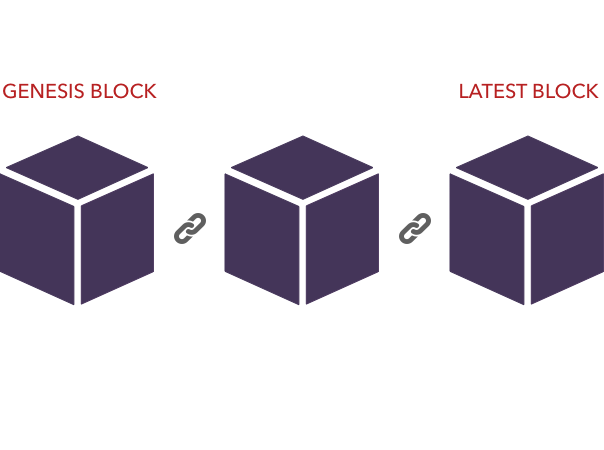What is cryptocurrency trading and how does it work? Understand The Margin In Cryptocurrency Trading? Cryptocurrency trading involves speculating on price movements via a CFD trading account, or buying and selling the underlying coins via an exchange. Here you’ll find more information about cryptocurrency trading, how it works and what moves the markets.

What is cryptocurrency trading?
Cryptocurrency trading is the act of speculating on cryptocurrency price movements via a CFD trading account, or buying and selling the underlying coins via an exchange.
CFD trading on cryptocurrencies
CFDs trading are derivatives, which enable you to speculate on cryptocurrency price movements without taking ownership of the underlying coins. You can go long (‘buy’) if you think a cryptocurrency will rise in value, or short (‘sell’) if you think it will fall.
Both are leveraged products, meaning you only need to put up a small deposit – known as margin – to gain full exposure to the underlying market. Your profit or loss are still calculated according to the full size of your position, so leverage will magnify both profits and losses.
Buying and selling cryptocurrencies via an exchange
When you buy cryptocurrencies via an exchange, you purchase the coins themselves. You’ll need to create an exchange account, put up the full value of the asset to open a position, and store the cryptocurrency tokens in your own wallet until you’re ready to sell.
Exchanges bring their own steep learning curve as you’ll need to get to grips with the technology involved and learn how to make sense of the data. Many exchanges also have limits on how much you can deposit, while accounts can be very expensive to maintain.
How do cryptocurrency markets work?
Cryptocurrency markets are decentralised, which means they are not issued or backed by a central authority such as a government. Instead, they run across a network of computers. However, cryptocurrencies can be bought and sold via exchanges and stored in ‘wallets’ .
Unlike traditional currencies, cryptocurrencies exist only as a shared digital record of ownership, stored on a blockchain. When a user wants to send cryptocurrency units to another user, they send it to that user’s digital wallet. The transaction isn’t considered final until it has been verified and added to the blockchain through a process called mining. This is also how new cryptocurrency tokens are usually created.
What is blockchain?
A blockchain is a shared digital register of recorded data. For cryptocurrencies, this is the transaction history for every unit of the cryptocurrency, which shows how ownership has changed over time. Blockchain works by recording transactions in ‘blocks’, with new blocks added at the front of the chain.

Blockchain technology has unique security features that normal computer files do not have.
Network consensus
A blockchain file is always stored on multiple computers across a network – rather than in a single location – and is usually readable by everyone within the network. This makes it both transparent and very difficult to alter, with no one weak point vulnerable to hacks, or human or software error.
Cryptography
Blocks are linked together by cryptography – complex mathematics and computer science. Any attempt to alter data disrupts the cryptographic links between blocks, and can quickly be identified as fraudulent by computers in the network.
What is cryptocurrency mining?
Cryptocurrency mining is the process by which recent cryptocurrency transactions are checked and new blocks are added to the blockchain.
Checking transactions
Mining computers select pending transactions from a pool and check to ensure that the sender has sufficient funds to complete the transaction. This involves checking the transaction details against the transaction history stored in the blockchain. A second check confirms that the sender authorised the transfer of funds using their private key.
Creating a new block
Mining computers compile valid transactions into a new block and attempt to generate the cryptographic link to the previous block by finding a solution to a complex algorithm. When a computer succeeds in generating the link, it adds the block to its version of the blockchain file and broadcasts the update across the network.



What moves cryptocurrency markets?
Cryptocurrency markets move according to supply and demand. However, as they are decentralised, they tend to remain free from many of the economic and political concerns that affect traditional currencies. While there is still a lot of uncertainty surrounding cryptocurrencies, the following factors can have a significant impact on their prices:
- Supply: the total number of coins and the rate at which they are released, destroyed or lost
- Market capitalisation: the value of all the coins in existence and how users perceive this to be developing
- Press: the way the cryptocurrency is portrayed in the media and how much coverage it is getting
- Integration: the extent to which the cryptocurrency easily integrates into existing infrastructure such as e-commerce payment systems
- Key events: major events such as regulatory updates, security breaches and economic setbacks
How does cryptocurrency trading work?
With IG, you can trade cryptocurrencies via a CFD account – derivative products that enable you speculate on whether your chosen cryptocurrency will rise or fall in value. Prices are quoted in traditional currencies such as the US dollar, and you never take ownership of the cryptocurrency itself.
CFDs are leveraged products, which means you can open a position for a just a fraction of the full value of the trade. Although leveraged products can magnify your profits, they can also magnify losses if the market moves against you.
What is the spread in cryptocurrency trading?
The spread is the difference between the buy and sell prices quoted for a cryptocurrency. Like many financial markets, when you open a position on a cryptocurrency market, you’ll be presented with two prices. If you want to open a long position, you trade at the buy price, which is slightly above the market price. If you want to open a short position, you trade at the sell price – slightly below the market price.
What is a lot in cryptocurrency trading?
Cryptocurrencies are often traded in lots – batches of cryptocurrency tokens used to standardise the size of trades. As cryptocurrencies are very volatile, lots tend to be very small: most are just one unit of the base cryptocurrency. However, some cryptocurrencies are traded in bigger lots.
What is leverage in cryptocurrency trading?
Leverage is the means of gaining exposure to large amounts of cryptocurrency without having to pay the full value of your trade upfront. Instead, you put down a small deposit, known as margin. When you close a leveraged position, your profit or loss is based on the full size of the trade.

What is margin in cryptocurrency trading?
Margin is a key part of leveraged trading. It is the term used to describe the initial deposit you put up to open and maintain a leveraged position. When you are trading cryptocurrencies on margin, remember that your margin requirement will change depending on your broker, and how large your trade size is.
Margin is usually expressed as a percentage of the full position. A trade on bitcoin (BTC), for instance, might require 15% of the total value of the position to be paid for it to be opened. So instead of depositing $5000, you’d only need to deposit $750.
What is a pip in cryptocurrency trading?
Pips are the units used to measure movement in the price of a cryptocurrency, and refer to a one-digit movement in the price at a specific level. Generally, valuable cryptocurrencies are traded at the ‘dollar´ level, so a move from a price of $190.00 to $191.00, for example, would mean that the cryptocurrency has moved a single pip. However, some lower-value cryptocurrencies are traded at different scales, where a pip can be a cent or even a fraction of a cent.
It’s important to read the details on your chosen trading platform to ensure you understand the level at which price movements will be measured before you place a trade.
FAQs
What is the difference between a digital currency and a cryptocurrency?
The difference between a digital currency and a cryptocurrency is that the latter is decentralised, meaning it is not issued or backed by a central authority such as a central bank or government. Instead, cryptocurrencies run across a network of computers. Digital currencies have all the characteristics of traditional currencies but exist only in the digital world. They are issued by a central authority.
How many different types of cryptocurrency wallets are there?
There are five main types of cryptocurrency wallets, namely desktop wallets, mobile wallets, online wallets, hardware wallets and paper wallets. You do not need a wallet if you are trading cryptocurrencies via a CFD account, only when you are buying them. Wallets are used to store, send and receive cryptocurrencies.
What was the first cryptocurrency?
The first cryptocurrency was bitcoin. The bitcoin domain was registered in 2008, but the first transaction took place in 2009. It was developed by someone called ‘Satoshi Nakamoto’. However, there is speculation that Nakamoto is a pseudonym as the bitcoin creator is notoriously secretive, and no one knows whether ‘he’ is a person or a group.
Is cryptocurrency real money?
Cryptocurrencies are an alternative to traditional money. Today, some outlets accept cryptocurrencies as a form of payment. However, they bear little resemblance to other asset classes because they are intangible and extremely volatile. They are mainly used by traders for speculating on rises and falls in value.
How many cryptocurrencies are there?
There are over 2000 cryptocurrencies available to buy and sell, though most have little value. Of these, bitcoin, ether (the token of the Ethereum network), ripple, bitcoin cash (an offshoot of bitcoin) and litecoin are among the most valuable by market capitalisation.
IG offers trading on nine of the most valuable cryptocurrencies: bitcoin, bitcoin cash, bitcoin gold, ether, ripple, litecoin, EOS, stellar (XLM) and NEO.









Leave a Reply